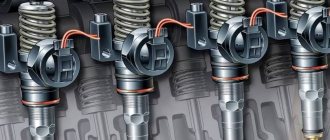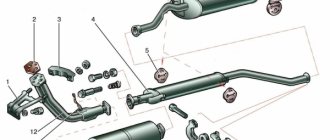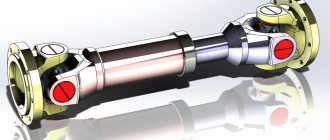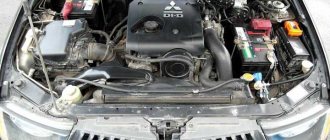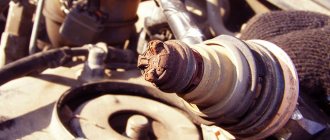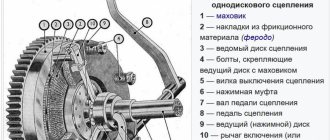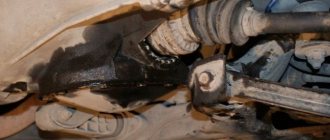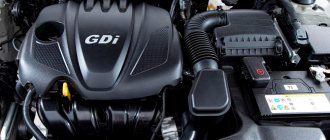The diesel injector is one of the main elements of the diesel engine power supply system. The nozzle (injector) provides direct supply of diesel fuel into the diesel combustion chamber, as well as dosing of the supplied fuel at a high frequency (more than 2 thousand pulses per minute). The injector effectively sprays fuel in the space above the piston. As a result of this spray, the fuel takes the form of a torch. Injectors of fuel supply systems that differ from each other have design features and differ in the control method. Injectors are divided into two groups:
- mechanical;
- electromechanical;
We also recommend reading the article about the design of the diesel engine power system. From this article you can learn about the components and operating principles of high-pressure fuel supply systems of a diesel internal combustion engine.
Purpose of nozzles
The main functions assigned to the nozzle include:
- fuel supply to the cylinder;
- sealing the combustion chamber;
- spraying onto fine particles;
- the most uniform distribution of diesel fuel throughout the combustion chamber;
- abrupt start of fuel injection and equally rapid completion of the process;
- precise dosing of the required amount of fuel.
The operation of diesel injectors is associated with an aggressive environment. Constantly changing pressure, which can reach 11 MPa. Temperature effects also wear out the injection system. Fuel supply occurs at a temperature of about 700°C. When diesel fuel burns, the nozzle is exposed to temperatures of 2000°C.
For stable engine operation, the injector must provide optimal dispersion. The higher the degree of fragmentation of diesel fuel droplets, the greater their total surface area. This allows the fuel to burn in a shorter period of time, which has a positive effect on environmental friendliness, dynamics and efficiency. In this case, the drops should not be too small, since in this case they will not reach the edges of the combustion chamber. At the moment, fuel injectors inject diesel fuel at a speed sufficient to ensure complete filling of the entire volume with a particle size of 30 to 50 microns.
Repair or buy a new part?
Today, most diesel injectors are produced by four companies: Siemens, Bosch, as well as Denso and Delphi. Of course, they have competitors, but still it is these four that occupy the majority of the market. For this reason, many, if not most, cars have injectors from these particular manufacturers. Why is this so important? The fact is that fuel equipment from not all manufacturers can be repaired. Let's figure it out:
- Bosch Common Rail . One of the most common nozzles at the moment. It can be restored without any problems. Most often, the multiplier, saddle, and rod fail. The last element cannot be restored. When repairing an injector, the nozzle is either changed or cleaned with ultrasound;
- Denso Common Rail . Japanese injectors are increasingly being installed on European cars. In terms of quality, they are significantly superior to analogues in their price category. Injectors are practically beyond repair. Firstly, there are few spare parts for them. Secondly, only a skilled craftsman with extensive experience can handle the assembly and disassembly of the part - there are a lot of small parts in the nozzle and special keys are needed to disassemble it;
- Delphi Common Rail . In these injectors, the valve often fails, and a little less often, the atomizer. Both can sometimes be found in specialized stores, but often you have to order online. After cleaning and replacing parts, the car owner receives a new injector in the old housing. It will cost half as much as buying a completely new part;
- Piezoelectric injectors . Today, Bosch and Siemens have the greatest experience in creating new generation injectors. Injectors with piezo crystals are increasingly being installed on new car models from European concerns. As a rule, the hydraulic accumulator comes out of them. A little less often the valve breaks and the sprayer jams. Repairing piezoelectric injectors is easy (the banal “disassembled, replaced, assembled”), but spare parts for repair are rarely on sale.
Pay attention to the injector manufacturer. If it's Bosch, the part can almost certainly be repaired. It's cheaper than buying a new injector. Repairing a part from Delphi is even cheaper, but in the vast majority of cases it involves waiting for the delivery of spare parts. If your car has a used Denso injector, then it is better to throw it away and look for a replacement. Various injectors marked Piezo have to be replaced with new ones, but in the near future we can expect that spare parts for them will begin to appear in stores.
Historical excursion
At the stage of the advent of internal combustion engines, Rudolf Diesel planned to use coal dust blown through a nozzle with compressed air as fuel. When burning coal, little heat was produced per unit mass, which forced the scientist to switch to higher-calorie fuel. Gasoline could not be used due to its explosiveness. Preference was given to kerosene.
In 1894, Rudolf Diesel managed to successfully start an engine that was supplied with fuel using a nozzle. A pneumatic compressor was used to carry out the injection. The pressure it created exceeded the force generated inside the cylinder. Because of this, this type of engine is called a compressor diesel engine.
Hydraulic fuel injection appeared a little later. It is used to this day, constantly being improved. The inventor of this method of fuel supply is the French engineer Sabate. He also suggested doing multiple injections. By supplying diesel fuel in several stages, it is possible to obtain more useful energy from a unit of fuel.
In 1899, Arshaulov designed a diesel engine with a high-pressure fuel pump, paired with a compressorless nozzle. This technical solution turned out to be successful, which is why diesel engines with fuel injection pumps are still used today.
The most modern diesel power systems have computer controlled nozzles and adapt to the operating mode of the engine. Depending on the type of combustion chamber, variations in fuel supply are possible. To ensure stable operation of diesel engines of various types of mixture formation, multi-hole and pin nozzles appeared.
How to choose a new injector
If repair is not possible, you have to buy a new spare part. In the case of injectors, there is no particular point in repairing if the part has already traveled 100-150 thousand kilometers (there are exceptions). We have to look for a replacement. Finding her is not that difficult. Here's how to search:
- By VIN code . An old and proven method, which in some cases is the only true and reliable method;
- According to the injector code . If you need to find a Commor Rail injector, you can be sure that the task is not an easy one. Such injectors have an individual code into which these details are “sewn”: flow rate, pressure-dependent operating parameters, reaction time. If you have a Delphi injector and you know its code, then it is better to take exactly the same one, guided by the code. When the vehicle is assembled, the injector code is recorded in the ECU ;
- According to the car . Specifically: car make, model, engine data, year of manufacture. There is always a chance of making a mistake and buying a nozzle that is not quite suitable, which will be very easy to find in online catalogs. Here you need to give preference to proven catalogs, which are worked on by specialists - they must clarify the compatibility of the spare part with a specific car and select analogs that are closest to the original spare part.
As practice shows, it is better to buy an original injector - it is more expensive than an analogue from the secondary market, but it can be installed on a car without any problems. If the same analogue was chosen inaccurately, then the car enthusiast will face the following problems:
- High noise level of the motor;
- Increased exhaust smoke;
- Reduced engine efficiency;
- Increased diesel consumption.
There is no particular point in understanding the specifics of generating an individual code and making adjustments to the control unit - all this should be known by technicians who also have testing equipment and specialized software. Delphi Common Rail as an example : the injectors of the latest models have a 20-digit code C3i , and older models have a 16-digit code C2i . When installing a new injector, the technician makes code adjustments to the ECU and it begins to work correctly with the new part. If the code is not changed, the unit will be guided by the characteristics of the old injector. The result is as indicated in the list above.
Operation of a mechanical nozzle
The principle of operation of a mechanical diesel injector lies in its opening for fuel injection under the influence of high pressure diesel fuel. The injection pump is responsible for supplying fuel. A low pressure pump pumps diesel fuel through the fuel line.
The sequence of fuel injection into the cylinders is determined by the injection pump. He is responsible for pumping and distributing diesel fuel along the highways. When the pressure reaches a certain value, the nozzle opens, and when the force decreases, it goes into a closed state.
The nozzle design includes a nozzle, a needle, a body and a pressure spring. To open and close the fuel supply, the shut-off needle moves inside the guide channel. When the impact of the fuel is stronger than the counteracting spring, the needle rises up, freeing the nozzle channel. If there is no required pressure from the injection pump, the nozzle is tightly closed. The sprayer may have several holes. For diesel engines with a separate combustion chamber, one hole is usually used. In other cases, the number of holes in the atomizer can range from two to six.
Mechanical nozzle
With a multi-hole design, it is possible to shut off the fuel supply:
- closing the fuel supply in each hole;
- by locking the chamber located at the bottom of the nozzle, which leads to the cessation of fuel injection.
To allow the high pressure pump to apply pressure to the needle, it has a special step. Fuel enters the nozzle and has the ability to lift it. This way it is possible to move the locking mechanism.
Why should you have your injectors repaired by professionals?
As you can see, the fuel injection system in a diesel engine is a complex mechanism, each detail of which is important. That is why we recommend not to experiment, but to entrust the repair of injectors to experienced specialists. Our service center has diagnostic and repair equipment that allows you to troubleshoot problems with the diesel engine of any car, regardless of the year of manufacture and configuration. The work is carried out within 1 day, using original components from manufacturers.
Twin spring injectors
During the improvement process, the diesel engine injector received two springs. The complication of the design made it possible to make a more flexible fuel supply to the combustion chamber. The fuel pumped by the injection pump first exceeds the resistance of one spring, and then the second. This allows fuel to be supplied in stages.
When idling or under light load, the fuel pump uses only one spring. Work at the first stage occurs with the combustion of a small amount of fuel, which increases the environmental friendliness and efficiency of the machine. An additional bonus of two springs is the reduction of noise when the engine is running.
Under load, the pressure created by the fuel injection pump increases. Diesel fuel is supplied in two portions, 20% at the first moment and 80% during the main injection. The spring stiffness is selected in such a way as to ensure maximum smoothness of fuel supply.
Operation of an injector with two springs
Conclusion
It often happens that finding a suitable diesel injector for a particular car is very difficult. First, you need to clarify compatibility. Secondly, you need to choose a spare part from a well-known manufacturer (although the choice here is not so great - mostly Bosch and Denso come across). Thirdly, you need to be prepared to spend a lot on spare parts. However, there is no point in saving money by buying used or not the most suitable budget analogue. If an injector breaks down, you should contact the service center and find out if it can be repaired - this is often two or three times cheaper than buying a new spare part.
Electromechanical injection system
The main difference between an electromechanical injector and its predecessors is the opening and closing of the fuel supply using a controlled solenoid valve. The valve is controlled by the electronic control unit. Without a corresponding signal from the controller, injection will not occur.
Structure of electromechanical injector
The control unit determines the moment of injection and doses the required amount of fuel, adjusting the open time, giving a series of pulses. In the ECU, the duration of diesel supply is determined taking into account many factors measured using sensors. For example, depending on the crankshaft speed, the number of pulses can vary from 1 to 7. Taking into account the engine load, its temperature conditions, the selected driving style and many additional parameters, it is possible to optimize the fuel supply as much as possible. This allows you to increase the resource of the power plant, the efficiency and environmental friendliness of the car. Taking into account all factors allows you to evenly distribute the fuel in the combustion chamber, which ensures complete combustion of diesel fuel at the required moment. The use of an electronic controller has significantly reduced vibration and noise from a running motor.
Questions on the topic
Filter:AllOpenSolvedClosedWaiting for response
Injector correction exceeded - error Answered by User Answered 9 months ago • Fuel system
36 views 1 answer. 1 vote.
What is the service life of the injectors? Answered by User answered 9 months ago • Fuel system
32 views 1 answer. 0 vote.
From which car can gasoline injectors be suitable for Ford Focus 2? Answered by User answered 9 months ago • Fuel system
46 views 1 answer. 0 vote.
Water got into the injectors, is this dangerous? Answered by User answered 9 months ago • Fuel system
35 views 1 answer. 0 vote.
Noise from Chevrolet Cobalt II injectors Answered by User Answered 9 months ago • Fuel system
28 views 1 answer. 0 vote.
How to clean the injectors on an Audi 100 and will it be of any use? Answered by User answered 9 months ago • Fuel system
27 views 1 answer. 0 vote.
Ask a Question
Pump nozzle
One type of diesel fuel system is a design with no high-pressure pump. This is due to the low reliability of fuel injection pumps and frequent failures of fuel lines. The pressure, with this technical solution, is created by the nozzle pump. Its plunger pair operates from the camshaft cams. In such a system it was possible to achieve very high pressure. This allows for better fuel distribution in the combustion chamber.
Pump nozzle
The disadvantage of such a system is the dependence of fuel pressure on engine speed. The complexity of the design increased its sensitivity to the quality of oil and diesel fuel. Repairing a fuel system with pump injectors will be more expensive compared to the classic version with a fuel injection pump.
When to flush injectors
Even the highest quality diesel engine still contains heavy fractions, which pollute the fuel system. When the car is idle for a long time, the pollution process occurs much more intensely. Injectors are especially affected: the geometry of the spray hole changes, the composition and behavior of the fuel-air mixture is disrupted, and engine power decreases. Cleaning the injectors of a diesel car is exactly what allows you to solve some of the problems associated with fuel equipment. Injector maintenance must be performed at least every 5,000 operating hours , and for some engines this figure is reduced to 500 hours. This is when injector cleaning is critical:
- Starting the engine becomes very difficult;
- The engine stalls at idle;
- The power of the internal combustion engine has dropped significantly;
- The exhaust system slams during operation;
- Fuel consumption has increased significantly.
Cleaning is carried out in special installations. It is worth going to the master and delegating this work to him. In theory, you can do the cleaning yourself. The use of flushing liquids poured into the tank gives a very weak result, and if the entire fuel system is heavily contaminated (if the car is old and has not been serviced for a long time, this is definitely the case), then the cleaning agent will damage the entire system at once.
Symptoms of malfunction
If the injector distributes fuel unevenly in the combustion chamber, the following symptoms are observed:
- deterioration of dynamic characteristics;
- a knock from the engine compartment, which can be confused with the knock of a connecting rod;
- engine tripping due to malfunction of any of the cylinders.
Excessive wear on the injector is indicated by:
- blue smoke while driving;
- exhaust too black;
- increased vibration and engine noise.
During a visual inspection, you can see diesel fuel leaks near the faulty injectors. There may also be a fuel smell that gets worse after stopping. Problems require urgent intervention, as fuel ignition and a fire in the engine compartment are possible.
Diagnosis of failure
Having identified symptoms of injector malfunction, it is necessary to diagnose them. The most thorough check is carried out using a diagnostic stand. With its help, you can detect even the smallest deviation in the operation of the injection system.
If you do not have a diagnostic stand, you can determine the faulty injector using the following method. It is necessary to start the engine and increase the crankshaft speed to a value at which instability of the engine operation can be clearly heard. After this, you need to disconnect the injectors one by one from the fuel line. The engine will change the sound of its operation. If you disconnect a faulty element of the fuel system, engine operation will not change. The main disadvantage of this method is the inability to accurately determine the cause that caused disturbances in the injection system.
The previous method was intended to detect a malfunction without removing the injectors from the engine, so the accuracy of fault determination is affected by the serviceability of all other vehicle systems. For example, a poor-quality spark plug can lead to incorrect identification of a faulty injector. To eliminate inaccuracies, it is possible to compare the operation of the nozzle with a control sample.
Uniformity of the torch of the faulty and control injectors
A tee is installed in the fuel system of the car. The injector to be tested and the control is connected to it. It is advisable to shut off the fuel supply to elements that are not being tested. After this, you need to start rotating the crankshaft. If the injector is faulty, its pattern will differ from the standard, as shown in the figure.
Device and design of nozzles
a — nozzle is closed; b — nozzle is open (injection).
1 - fuel return, 2 - electrical terminals, 3 - solenoid valve, 4 - fuel inlet from the battery, 5 - ball valve, 6 - hydraulic control chamber jet,
7 — “feed” nozzle, 8 — hydraulic control chamber, 9 — control plunger, 10 — channel to the sprayer, 11 — nozzle needle.
Fuel is supplied to the injector through the high pressure inlet fitting (4) and then into the channel (10) and the hydraulic control chamber (8) through the nozzle (7). The hydraulic control chamber is connected to the fuel return line (1) through the hydraulic control chamber nozzle 6, which is opened by an electromagnetic valve. When the nozzle (6) is closed, the hydraulic pressure forces applied to the control plunger (9) exceed the pressure forces applied to the shoulder of the nozzle needle (11).
As a result, the needle sits on the seat and closes the passage of high-pressure fuel into the combustion chamber. When a start signal is applied to the solenoid valve, the nozzle (6) opens, the pressure in the hydraulic control chamber drops, and as a result, the force of hydraulic pressure on the control plunger also decreases. Since the force of hydraulic pressure on the control plunger is less than the force acting on the shoulder of the injector needle, the latter opens and fuel is injected into the combustion chamber through the nozzle holes. This indirect control of the injector needle, using a multiplier system, allows for very rapid needle lifting, which cannot be achieved by direct action of the solenoid valve.
The so-called “control dose” of fuel required to lift the injector needle is additional to the actual amount of fuel injected, so this fuel is sent back to the fuel return line through the hydraulic control chamber jet. In addition to the “control dose”, leaks through the injector guide needles also leak into the fuel return line and further into the fuel tank. The safety valve (pressure limiter) of the battery and the pressure reducing valve are also connected to the fuel return line manifold. Nozzle operation
The operation of the injector can be divided into four operating stages when the engine is running and high pressure injection pump is created:
• nozzle closed with high pressure applied; • the injector opens (beginning of injection); • the nozzle is completely open; • the injector closes (end of injection).
These operating stages are the result of forces applied to the injector parts. When the engine is stopped and there is no pressure in the battery, the injector is closed under the action of a spring. Injector closed: When the injector is closed, no power is supplied to the solenoid valve (Fig. a). When the hydraulic control chamber nozzle is closed, the armature spring presses the ball against the seat, and the high pressure supplied to the chamber and to the injector nozzle from the accumulator increases. Thus, the high pressure acting on the end of the control plunger, together with the spring force, keeps the nozzle closed, overcoming the pressure forces in the atomizer chamber. The injector opens: before the injection process begins, while the injector is still closed, a large current is supplied to the solenoid valve, which ensures a rapid lifting of the ball valve (Fig. b). The ball valve opens the hydraulic control chamber jet and, since the electromagnetic force now exceeds the force of the armature spring, the valve remains open, and almost simultaneously the current supplied to the solenoid valve winding is reduced to the current required to hold the armature. This is possible because the air gap for electromagnetic flux is now reduced.
When the nozzle is open, fuel can flow from the hydraulic control chamber into the upper cavity and further along the fuel return line to the tank. The pressure in the hydraulic control chamber decreases, the pressure balance is upset, and the pressure in the atomizer chamber, equal to the pressure in the accumulator, turns out to be higher than the pressure in the hydraulic control chamber. As a result, the pressure force acting on the end of the control plunger decreases, the injector needle rises, and the fuel injection process begins. The lifting speed of the nozzle needle is determined by the difference in flow rates through the nozzle and nozzle holes. The control plunger reaches the upper stop, where it remains, supported by a “buffer” layer of fuel formed as a result of the above-mentioned difference in flow rates through the nozzle and nozzle openings. The injector needle is now fully open and fuel is injected into the combustion chamber at a pressure almost equal to the pressure in the accumulator. The distribution of forces in the nozzle is similar to the distribution in the opening phase. Injector closes (end of injection): As soon as the power supply to the solenoid valve is stopped, the armature spring moves it down and the ball valve closes. The armature is made up of two parts, so although the armature plate moves downwards with its shoulder, it can be counteracted by the return spring, which reduces the stress on the armature and ball. Closing the nozzle leads to an increase in pressure in the hydraulic control chamber when fuel enters it through the “feeding” nozzle (7). This pressure, equal to the pressure in the accumulator, acts on the end of the control plunger, and the pressure force, together with the spring force, overcomes the pressure force acting on the shoulder of the nozzle needle, which closes. The speed of landing of the nozzle needle on the seat, that is, the speed of closing the nozzle, is determined by the flow rate through the “feeding” nozzle. Fuel injection stops as soon as the injector needle sits on the seat. Operating principle (CR) The pressure generation and direct injection process in the Common Rail (CR) fuel system are completely separated. High pressure in the fuel system is created regardless of the engine speed and the amount of fuel injected. The fuel, ready for injection, is under high pressure in the fuel accumulator. The amount of fuel injected (cyclic supply) is determined by the actions of the driver, and the advance angle and injection pressure are determined by the electronic control unit (ECU) based on programmable characteristic matrices stored in the microprocessor memory. The ECU issues a control start signal to the corresponding solenoid valves, resulting in injection of an injector into each cylinder.
The CR battery fuel system includes the following electronic controls:
| • | ECU; | • | boost pressure sensor; |
| • | crankshaft speed sensor; | • | fuel accumulator pressure sensor; |
| • | camshaft speed sensor; | • | coolant temperature sensor. |
Using the input signals of the above sensors, the ECU registers the position of the accelerator pedal and determines the operating characteristics of the engine and the vehicle as a whole at a given time. Based on the information received, the ECU can, through open and closed loops, carry out control actions with the vehicle and, especially, with the engine. The engine speed is measured by the crankshaft speed sensor, and the sequence of flashes is measured by the camshaft speed (position) sensor. An electrical signal generated at the accelerator pedal potentiometer informs the ECU how hard the driver has pressed the pedal, in other words, his torque requirements. The boost pressure sensor provides the ECU with data on the amount of air in order to adapt the combustion process to comply with emission standards. At low ambient temperatures and with a cold engine, the ECU uses information from the coolant temperature and air temperature sensors to adapt the received data to set the injection timing, use of additional injection (after the main one) and other parameters depending on operating conditions.
Maintainability and diagnostics of the system
Due to insufficient fuel quality or system fatigue (when the system is operated for too long), injectors, high pressure control sensors and devices that create this high pressure begin to fail first. The injection pump is quite stable here - the mistake of many inexperienced diesel drivers is that, without understanding the essence of the malfunction, they try to immediately replace the injection pump. This should not be done - or rather, first of all, you must always understand exactly why the problem arose and what actions need to be taken to eliminate it. And only then decide to take extreme measures. By the way, the Common Rail fuel injection pump really doesn’t like dirt. If dirt gets into the high-pressure fuel pump, it’s a big deal, it instantly fails and drives chips into the entire system. Replacing the entire system (flushing in this case is unacceptable, only complete replacement of all pipes, lines, tank, pump, injectors) is a very expensive operation, so we advise car owners to pay special attention to using only impeccably high-quality diesel fuel.
You may ask: why doesn’t flushing help? The fact is that flushing does not make it possible to completely get rid of chips that may enter the system again.
In general, by and large, all major system interruptions are associated with bad fuel. Different machines have their own consequences. As experience shows, injectors most often fail on French cars - they, as they say, “freeze.” And the most interesting thing, what basically scares people, is that the car immediately stalls. This, by the way, is another specific feature of Common Rail: when the spray needle hangs for a short time, the pressure balance in the rail is disrupted. The voltage drop is noticed by the rack pressure control sensor, and this command, the so-called first order error, causes the control unit to turn off the engine. The car may stall even when picking up speed. Moreover, what is even more interesting is that after some time after the car has “settled”, it can easily start and drive again. Although in the future in certain modes it will most likely stall again. Naturally, this frightens people who are not familiar with the system; they change the injection pump, but achieve nothing. In order to competently deal with such a problem, it is necessary to use a special device that simulates a sensor, with the help of which it will be possible to determine which injector has failed. It can be replaced or, after inspection, repaired.
It also happens that pumps leak. The leak can be eliminated without any problems by replacing the gasket. But cases of pump fatigue and wear are rare, but if, we repeat, mechanical particles get into the system, they immediately disable it.
Diagnostics of diesel engines with the Common Rail system In order to accurately determine what exactly the malfunction is, it is necessary to take into account and evaluate the condition of three interconnected parts:
• condition of the mechanical components of the engine (turbine, cylinder-piston part of the diesel engine, correct timing of the timing), • electronic engine control system (serviceability of sensors, wiring), • hydraulic part (fuel supply system, injection pump, injectors).
If you check all the named components in a row, it will take a lot of time. In order to speed up the search for possible deviations, the control unit is equipped with a function for monitoring the health of sensors and actuators. When the block detects deviations in the readings of any sensors, an error is written in the RAM (we described how the block detects deviations in readings from the plausible ones in another article). Depending on the severity of the error, fuel injection continues or the engine stops. Using the scanner in the parameters menu, you can see the actual readings and the reaction of the sensors to various disturbances. An important feature of CR is that each injector is controlled individually i.e. Each injector has its own fuel correction coefficients, which can be used to judge the condition of each cylinder and the corresponding injector. As an example, here is the scan data for some parameters in the CR system at idle:
| Crankshaft speed | 750 rpm |
| Coolant temperature | 88º C |
| Fuel pedal position | 0% |
| Prescribed pressure in the high pressure accumulator | 261 bar |
| Real pressure | 264 bar |
| Cyclic feed of one nozzle | 13.8 IU |
| Duty ratio of the control signal of the electromagnetic valve reg. pressure | 16% |
| Correction of engine smoothness | |
| For cylinder 1 | -3.35 |
| For cylinder 3 | 0.00 |
| For cylinder 4 | 2.58 |
| For cylinder 2 | 0.65 |
The correction is intended to compensate for cylinder deviations in the engine mechanics and hydraulics of the fuel injection system that occur during mass production. Unevenness is detected using a speed sensor. If any cylinder differs by more than 30% from the set value, this is considered abnormal and the control unit tries to correct the position by changing the fuel supply. If we detect a significant fuel correction in a certain cylinder, this may be due to either low compression in the cylinder (a burnt-out valve, for example) or a faulty injector. In case of malfunctions that do not disable the system, the control unit limits the fuel supply. Such defects include malfunctions of temperature sensors, too low boost pressure, problems with measuring air flow, or failure of the gas pedal position sensor. For safety reasons, the system stops the engine under the following conditions:
• the injector fails or the pressure in the accumulator drops significantly,
• excess fuel pressure in the rail above MAX (about 1500 bar),
• failure of the pressure control solenoid valve.
The engine cannot be started if the speed and camshaft position sensors are not working. Electronic self-diagnosis methods are usually not suitable for checking the hydraulic part. Malfunctions requiring diagnosis using hydraulic testers:
• inability to start the engine, or the engine stalls after starting: it is recommended to test the power balance of the cylinders using a scanner (for Bosch systems); • if there are malfunctions other than those described above, for example, engine vibration, emission of black/white smoke when starting or idling.
The problem may be a difference in the amount of fuel passing through each injector. Diagnostic procedure depending on the symptom Engine does not start • Low pressure line test ► • Injector return test (Static) ► • High pressure line test. Engine does not start • Low pressure line test ► • Injector return test (Dynamic) ► • High pressure line test.
Low pressure line test When testing the low pressure line, the vacuum in the suction line (if the fuel priming pump is gear type) or pressure (if the fuel pump is electric) is measured. In this way, it is possible to identify a breakdown of the fuel pump, dirty filters or damage to the fuel supply pipes.
Injector Return Test (Static) In this test, the injector electrical connectors are disconnected and the high pressure control valve connector is also disconnected. A device for measuring pressure is connected to the fuel pressure sensor on the rail. Thus, when cranking the crankshaft, high pressure is created in the ramp with the injectors turned off (uncontrolled). If you connect the injector returns to measuring beakers, you can identify a malfunction of the injector control valves (if the amount of fuel in the return is 0-200 ml, the valve is operational). This test also evaluates the pressure that is created in the ramp (1000-1800 bar is the norm). Dynamic injector return test . In this test, measuring beakers are also installed on the injector returns, as in the previous test. After this, the engine starts and runs for three minutes at idle and two minutes at 2500-3000 rpm. An injector whose readings deviate three times from the norm must be replaced. High Pressure Line Test This is done to find out how much pressure a high pressure pump can produce. To carry out the test, the injectors are disconnected from the ramp and the connecting fittings of the ramp are plugged. A device is connected to the fuel pressure regulator that blocks the flow of fuel into the return line. Next, the engine is rotated by the starter for 5-6 seconds. And at the same time, high pressure is measured. Normal pressure for the Bosch system is 1000-1500 bar. If the pressure is below normal, then the cause may be the injection pump, pressure regulator or fuel pressure sensor to find out who exactly we check next. Fuel pressure regulator test To carry it out, we repeat the diagram of the previous experiment, only we connect a measuring beaker to the return line of the regulator. We turn the engine with the starter for 5 seconds and notice the amount of fuel flowing out from the return line, it should not exceed 10 cc. Checking the mechanical part of a diesel engine is the same as for other diesel engines. Usually it consists of checking compression and pneumatic tightness (to assess the condition of the CPG), checking the amount and pressure of crankcase gases (which affects oil consumption in turbocharged engines), checking the condition of the turbine (checking bearing wear and the operation of the charge air pressure regulator), and the installation phase Timing belt
Separ 2000 Water is the source of life on Earth. Yes, that's right. But if water gets into the fuel system of a car, it can lead to the rapid death of the vehicle. Unfortunately, water inevitably gets into the fuel, either due to violations of its production and storage technology, or in the form of condensation as a result of constant heating and cooling of the fuel tank.
Cleaning scheme Professionals understand how dangerous it is for contaminated fuel that accumulates at the bottom of the fuel tank to enter the fuel system, so they recommend not emptying the fuel tank and flushing it at least once a year. But it offers a more convenient and economical way out of the situation - the use of the Separ 2000 filter. This excellently proven multi-stage system has solved the main problem of diesel - it allows you to achieve one hundred percent removal of the main destroyer of diesel equipment - water - from the fuel. Separ 2000 also leaves no chance for other contaminants. Separ 2000 exists in two main versions - with and without a fuel heating device. • Separ 2000 without fuel heating The primary separation of water and large mechanical inclusions is carried out due to the movement of fuel first through the internal (stages 1 and 2) and then external (stages 3 and 4) spiral channel of the passive cyclone. Complete separation of residual water and small impurities is carried out at stage 5 thanks to the original composition of the filter paper, patented by Loesing. Water accumulates in a transparent settling glass, which allows you to control its level and open the drain tap on time (usually once every two to three weeks). The final degree of mechanical cleaning, depending on the filter element used, is 10, 30 or 60 microns. • Separ 2000 with fuel heating The mechanical principle of the filter is completely identical to that described above. The heating element located inside the Separ 2000 sump effectively heats the fuel flow, melting paraffin flakes and preventing their new formation. This way, it is possible to avoid clogging of the fine filter and other elements of the vehicle’s fuel system. Heating operates only when the engine is running. Heating is controlled by an automatic relay that turns on the heating element at a fuel temperature below -5º C and turns it off at a temperature above +10º C. This means that even if the system is activated at a fuel temperature above +10º C, consumption no electricity occurs. The activation of the heating element is indicated by a control light on the filter control unit in the driver's cabin. In emergency cases, when the temperature exceeds +80º C, the heating element is turned off using a thermal fuse mounted inside the filter housing along with a relay. Main features In addition to the high degree of separation of water contained in the fuel, the main advantages of using the Separ 2000 filter also include: compact design with the possibility of various connection options, the ability to reuse the filter element, ease of installation and ease of subsequent maintenance. The use of a filter provides complete protection of the high-pressure booster pump, injectors, valves and pistons from premature wear, which helps to increase the service life of diesel equipment by 4-5 times. Combined with minimal installation and maintenance costs, Separ 2000 filters. Application The areas of application for the Separ 2000 filter are quite extensive. These are vehicles (trucks, cars, buses), construction and agricultural machines, forklifts, river and sea vessels, compressors and generators, gas stations and oil storage facilities. In short, the filter can be installed wherever diesel engines are used. Today we can say with confidence that only the Separ 2000 filter guarantees factory fuel consumption standards, provides reliable protection of the vehicle’s fuel system and is a guarantor of trouble-free operation of the engine, regardless of the degree of contamination of the fuel poured into the tank.
